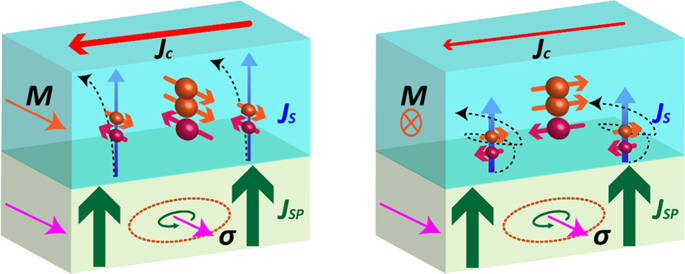NPG Asia Materials ( IF 8.6 ) Pub Date : 2020-01-17 , DOI: 10.1038/s41427-019-0191-1 Zhaozhao Zhu , Xiaoli Zheng , Gang Li , He Bai , Jian Su , Ying Zhang , Jian-Wang Cai

|
Pure spin current transport has become the central point of the state-of-the-art spintronics. While most spin current phenomena have been extensively explored, aspects of the pure spin current injected into ferromagnetic metals are far from completely understood. The reports on a fundamental problem, i.e. the spin relaxation asymmetry with spin current polarization collinear or transverse to the magnetization of ferromagnetic metals, are quite controversial. By employing a Y3Fe5O12 (YIG)/Cu/Ni80Fe20 (Py)/Ir25Mn75 (IrMn) spin valve heterostructure with the thermal inverse spin Hall effect (ISHE) of a Py well separated from other thermoelectric transport and thermal Hall effects, we find that the ISHE signal amplitude in 10 nm Py increases by 80% when changing the relative orientation of the YIG and Py magnetization from orthogonal (⊥) to collinear (||). Moreover, the spin-diffusion length λsf and effective spin Hall angle \(\theta _{{\mathrm{SH}}}^{{\mathrm{eff}}}\) of Py are also spin orientation dependent and vary from \(\lambda _{{\mathrm{sf}}}^ \bot\) = 1.0 ± 0.1 nm to \(\lambda _{{\mathrm{sf}}}^\parallel\) = 2.8 ± 0.5 nm with \(\theta _{{\mathrm{SH}}}^{{\mathrm{eff}}}\left( \bot \right)/\theta _{{\mathrm{SH}}}^{{\mathrm{eff}}}\left( \parallel \right)\) = 1.5, respectively. Our results demonstrate magnetization orientation-dependent spin relaxation and spin injection efficiency of a pure spin current, revealing that exchange interactions in ferromagnetic metals strongly affect the transport of the pure spin current.
中文翻译:

铁磁金属中强自旋取向相关的自旋电流扩散和逆自旋霍尔效应
纯自旋电流传输已成为最先进的自旋电子学的中心点。尽管已对大多数自旋电流现象进行了广泛的探索,但注入铁磁金属的纯自旋电流的各个方面还远远没有被完全理解。关于一个基本问题的报告,即自旋电流极化与铁磁金属共线或垂直于铁磁金属的磁化强度的自旋弛豫不对称性,颇有争议。通过使用Y 3 Fe 5 O 12(YIG)/ Cu / Ni 80 Fe 20(Py)/ Ir 25 Mn 75(IrMn)自旋阀异质结构,其Py井的热逆自旋霍尔效应(ISHE)与其他热电输运和热Hall效应分开,我们发现,改变相对方向时,PHE中10 nm Py的ISHE信号幅度增加80% YIG和Py的磁化强度从正交(⊥)到共线(||)。此外,自旋扩散长度λ SF和有效自旋霍尔角\(\ THETA _ {{\ mathrm {SH}}} ^ {{\ mathrm {EFF}}} \) PY的也自旋取向依赖性和从变化\(\ lambda _ {{\ mathrm {sf}}} ^ \ bot \) = 1.0±0.1 nm至\(\ lambda _ {{\ mathrm {sf}}} ^^ parallel \) = 2.8±0.5 nm\(\ theta _ {{\ mathrm {SH}}} ^ {{\ mathrm {eff}}} \ left(\ bot \ right)/ \ theta _ {{\ mathrm {SH}}} ^ {{\ mathrm {eff}}} \ left(\ parallel \ right)\) = 1.5。我们的结果证明了纯自旋电流的磁化取向依赖性自旋弛豫和自旋注入效率,表明铁磁性金属中的交换相互作用强烈影响纯自旋电流的传输。









































 京公网安备 11010802027423号
京公网安备 11010802027423号